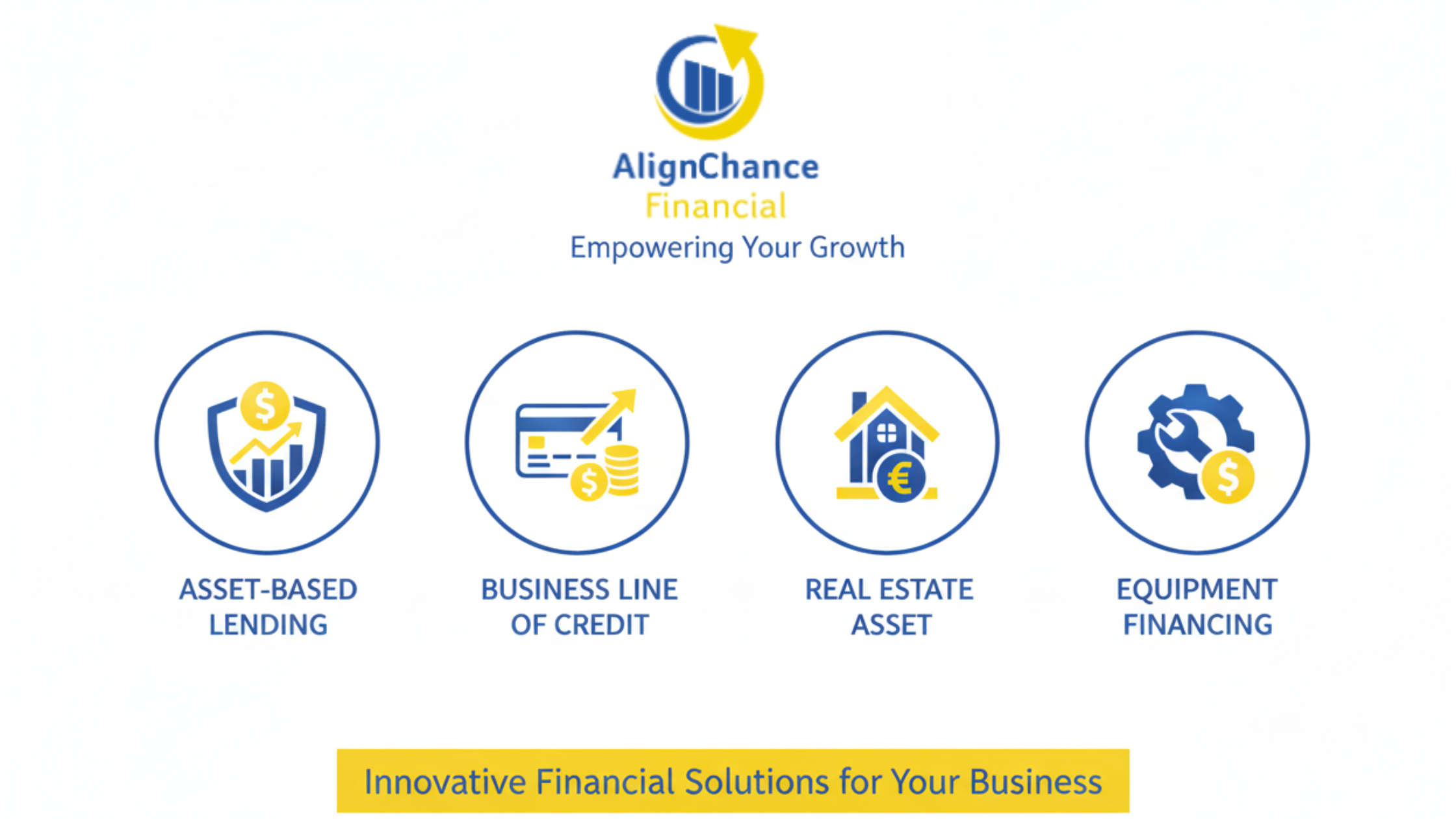The 5 Funding Alternatives When Your Bank Says 'No' to Your Business Loan

Being denied a business loan from a traditional bank can feel like a devastating roadblock, but for the modern entrepreneur, it's increasingly just a minor detour. The reality is that only a small percentage of small business loans are approved by big banks, which often have stringent requirements for time in business, perfect credit scores, and extensive collateral.
If a conventional lender says "No," it simply means you need to look beyond the rigid confines of the traditional financial system. Fortunately, the rise of alternative lending market expected to reach $12.8 Billion by 2033—has created a robust marketplace of flexible, fast, and often better-suited funding options for small and midsize businesses (SMBs).
Here are the five high-impact funding alternatives to consider when you need capital to grow, stabilize, or save your business.
Why Banks Reject Business Loan Applications (and How to Prepare for Next Time)
Before exploring alternatives, it's wise to understand the common reasons for a bank rejection. This insight helps you choose the alternative funding that addresses your specific weakness, whether it's poor credit or inconsistent cash flow.
Common reasons for denial include:
- Insufficient Time in Business: Banks often require 2-3 years of operation, making it nearly impossible for startups or younger SMBs to qualify.
- Low Credit Score (Personal or Business): Even an otherwise healthy business can be torpedoed by a founder's personal credit history.
- Insufficient or Inconsistent Cash Flow: Lenders need to be confident you can make monthly payments. Businesses with seasonal or fluctuating revenue often fail this test.
- Lack of Collateral: Without hard assets (real estate, large equipment) to secure the loan, a bank is often unwilling to take the risk.
The key takeaway? An alternative lender is typically more interested in the overall health and potential of your business than in meeting a checklist of decades-old requirements.
Alternative #1: Exploring the World of Online Marketplace Lending
Online marketplace lending is where platforms like AlignChance Financial shine. Instead of applying to one institution, you submit one application to a platform that matches you with multiple diverse lenders.
How it Works: These digital platforms use sophisticated algorithms to quickly assess your business health. They often consider a broader set of data points than a bank—things like bank transaction history, industry trends, and real-time revenue—not just a credit score.
Best For: Businesses of all sizes that need speed and convenience, especially those with solid revenue history that just don't meet a bank's time-in-business or credit score minimums. The digital process often leads to funding in days, not weeks or months.
Alternative #2: Invoice Factoring vs. Invoice Financing: Which is Right for You?
If your business provides goods or services on credit (B2B) and waits 30, 60, or 90 days for client payment, your cash flow is needlessly tied up. Factoring and financing allow you to unlock that capital immediately.
Invoice Factoring (Selling the Invoice)
- Structure: You sell your unpaid invoices (accounts receivable) to a factoring company at a discount.
- Process: The factoring company advances you a large portion of the invoice value (e.g., 80-90%) upfront. The factoring company then takes over the collection process, collecting the full amount from your customer. Once collected, they remit the remaining balance to you, minus their fee.
- Best For: Businesses that need immediate cash flow and want to outsource their collections management. Since the lender is more concerned with the credit quality of your customers, this is an excellent option for newer businesses or those with poor personal credit.
Invoice Financing (Borrowing Against the Invoice)
- Structure: You use your unpaid invoices as collateral for a short-term loan or line of credit.
- Process: You still receive an upfront percentage of the invoice value, but you retain ownership of the invoice and manage the collections yourself. Once your customer pays, you use those funds to repay the loan principal plus fees.
- Best For: Businesses that want to maintain a confidential relationship with their customers and have an established, reliable accounts receivable department.
Alternative #3: Asset-Based Lending (ABL) and Its Strategic Use
Asset-Based Lending is a flexible financing option where the loan is secured by a company's assets, offering a revolving line of credit that fluctuates based on the value of those assets.
How it Works: Unlike a traditional bank loan secured by real estate, ABL allows you to borrow against a wider, often more dynamic, range of assets, including:
- Accounts Receivable: The most common form of ABL.
- Inventory: Finished goods, raw materials, or work-in-progress.
- Machinery & Equipment: Heavy industrial or specialized gear.
Best For: Companies with significant physical or liquid assets but inconsistent cash flow, such as manufacturers, distributors, and wholesalers. ABL facilities often provide higher advance rates and more flexible covenants than cash-flow-based loans, making them ideal for high-growth businesses that are temporarily asset-rich but cash-poor.
Alternative #4: The Rise of Revenue-Based Financing (RBF) for Growth
Revenue-Based Financing has emerged as a favorite among tech startups and high-growth e-commerce companies, though it's now widely available across many industries. RBF is a unique model because the repayment is tied directly to your sales performance.
How it Works: A lender provides capital upfront in exchange for a percentage of your future gross revenues until a predetermined cap (the principal plus a fee) is reached.
- Variable Repayments: If your revenue is high in a given month, your repayment is higher. If your revenue is low, your repayment is lower. This offers a level of flexibility that fixed monthly payments can't match, as it avoids choking a business during slow periods.
- Non-Dilutive: Crucially, unlike venture capital, RBF does not require you to give up any equity or ownership in your business.
Best For: Businesses with predictable monthly revenue (even if it's seasonal) that are looking to fund a specific growth initiative like a new product launch, a major marketing push, or inventory purchases ahead of a busy season.
Alternative #5: Business Credit Cards and Lines of Credit as a Bridge
While these may seem like basic tools, using a Business Line of Credit (LOC) or a Specialized Business Credit Card strategically can serve as a powerful alternative to a term loan.
Business Line of Credit (LOC)
- Function: An LOC is a pool of funds you can draw from as needed, up to a certain limit. You only pay interest in the amount you use.
- Advantage: Provides an emergency safety net or flexible working capital to cover short-term gaps, like a payroll cycle that comes before a major client’s payment is due.
- Best For: Managing daily cash flow fluctuations and financing recurring operational needs.
Specialized Business Credit Cards
- Function: While great for expenses, many cards now offer substantial 0% introductory APR periods (often 12-21 months).
- Advantage: A responsible business can use the 0% APR period to finance a significant purchase—like new office technology or bulk inventory—and pay it off interest-free, effectively getting a short-term, no-cost loan.
- Best For: Small, specific capital expenses or gap funding where you are highly confident in your ability to repay quickly.
Putting Power Back in Your Hands
The era of the bank being the sole gatekeeper for business funding is over. Today's lending landscape is diverse, dynamic, and designed to meet the real-world challenges of SMBs—even those who have heard "No" from a traditional lender.
If you have a viable business and a strong plan for capital, the funding is out there. The challenge is navigating the options to find the right lender with the right product for your unique situation.
Ready to find the funding that aligns with your business goals? Don't waste time on endless applications. Start your match questionnaire on AlignChance Financial today and get the best alternative lenders best suited to make your next move a reality.
- Art
- Crafts
- Drinks
- Fitness
- Food
- Games
- Health
- Home
- Literature
- Music
- Networking
- Finance
- Other
- Hotels
- Shopping
- Sports
- Wellness


